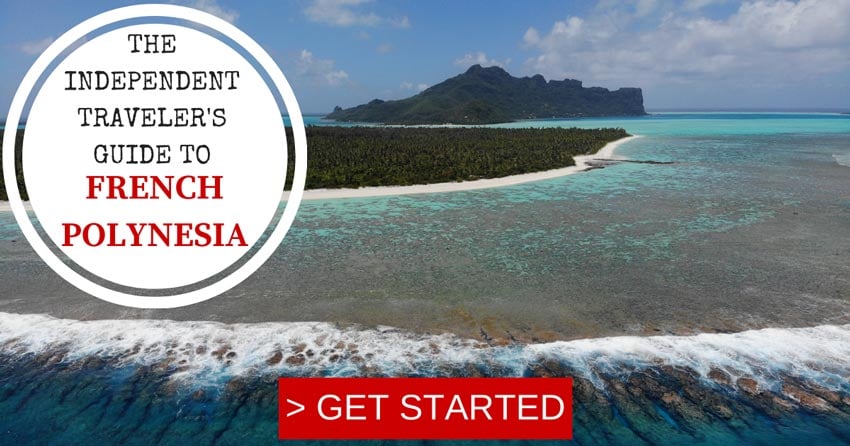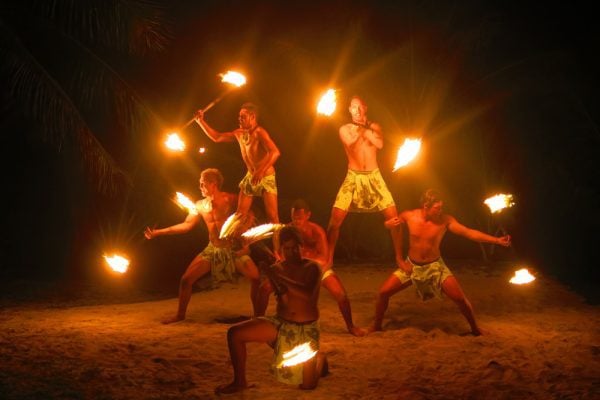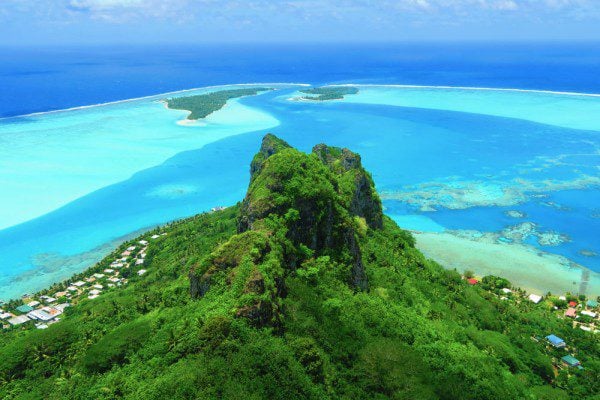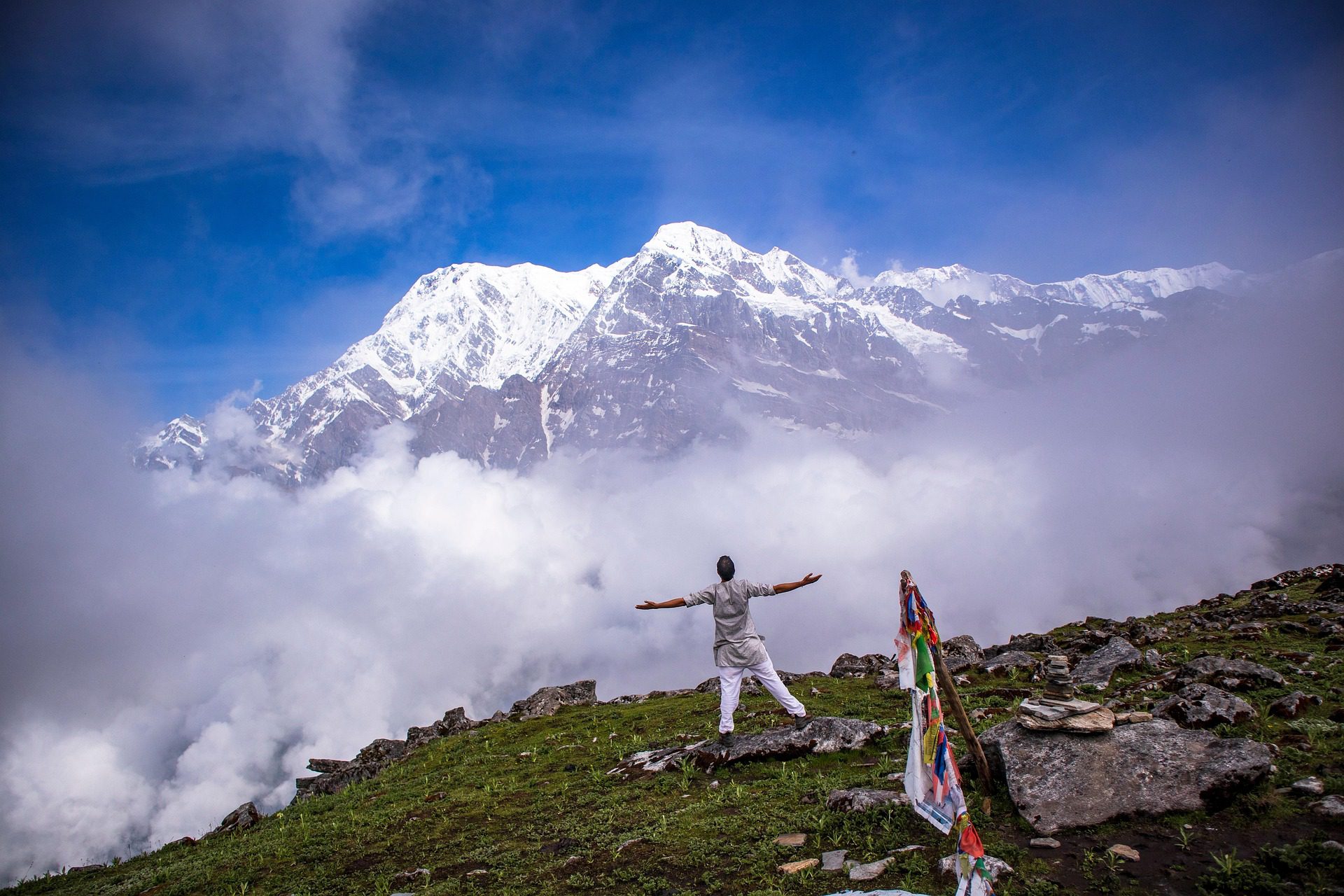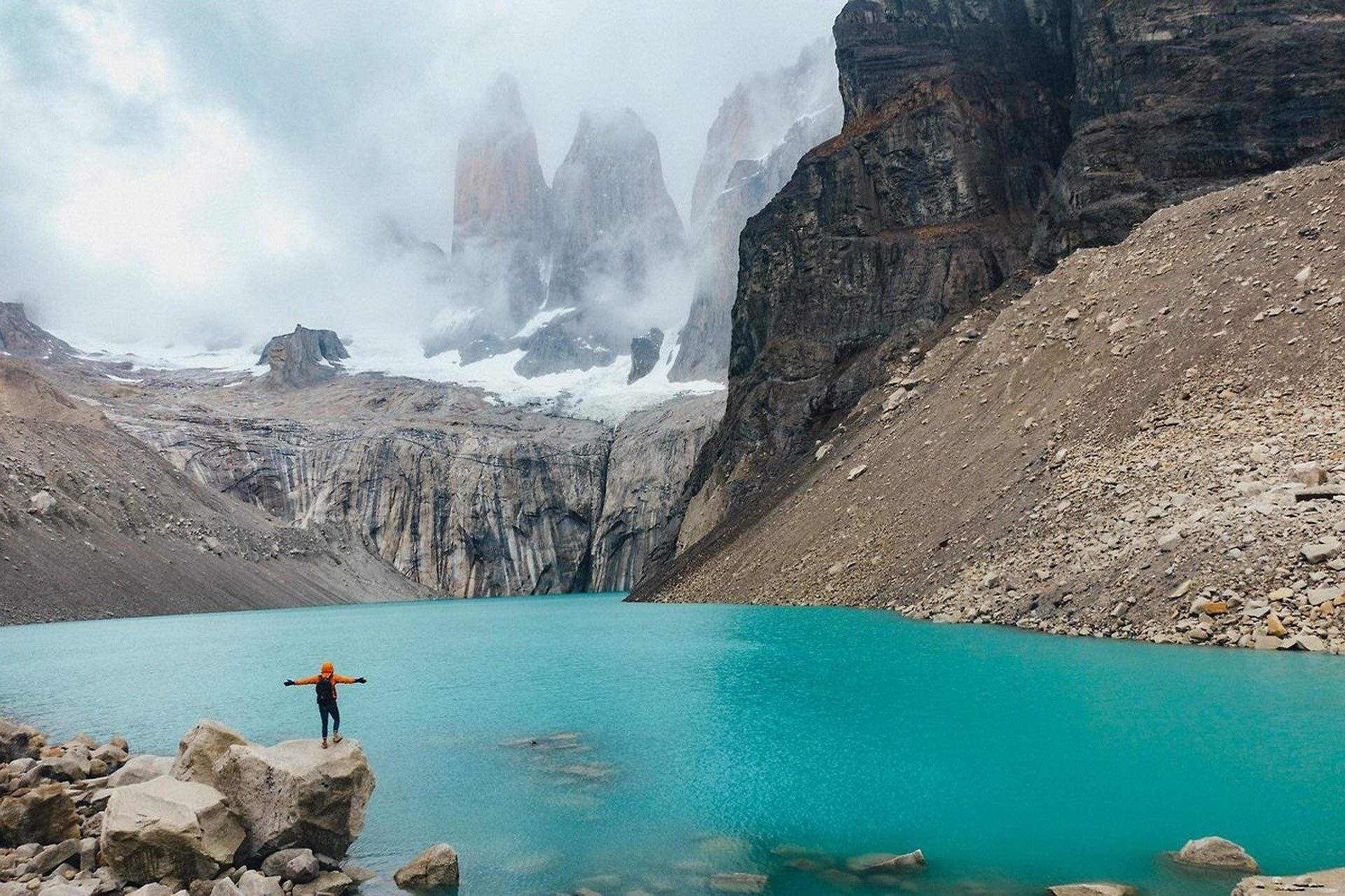Who Knew Jurassic Park Actually Existed?
An incredible voyage to the far reaches of the globe is quickly coming to its end. As with any good story, the best was to be saved for last, with a trip to the distant Marquesas Islands of French Polynesia. Known as ‘The Mysterious Islands’, forget about everything you’ve seen so far in previous weeks. The Marquesas Islands are dramatically wild beyond imagination. In this week’s update from the South Pacific Islands, we head to the island of Nuku Hiva. With a name like that, just imagine what you’re about to see!
Heading off to French Polynesia? In-depth island guides to all 5 archipelagos await you, including sample itineraries and essential travel tips & tricks.
Beauty beyond imagination
One of the five archipelagos that make up French Polynesia, the Marquesas Islands are among the most remote in the entire world – lying over 1,000 km’s from Tahiti and over 4,500 km’s from the nearest continental land mass in Mexico. This isolation has led to the creation of a totally unique ancient culture, with its own language, religion, art and even a cannibalistic past. Evidence of such rich times await visitors who explore the islands, with mysterious ancient temples hiding deep in the lush valleys and up in the mountains.
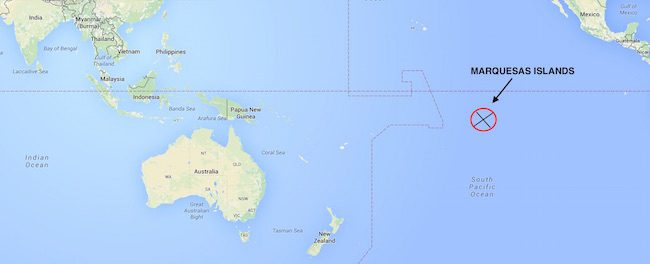
Unlike the islands we’ve seen so far, like Maupiti in the Society Islands and Fakarava in the Tuamotus, the Marquesas Islands are high islands with no protective coral reef. The islands rise out of the deep blue ocean and climb into the clouds like natural skyscrapers with sharp basaltic teeth. Joining the mountains, are deep valleys that spill into beautiful bays of white or black sand and wild palm trees. Capping off this powerful scenery are 1000 foot waterfalls that splash down at almost every corner.
Strangely enough, the Marquesas Islands were the first to be colonized in what is today French Polynesia. This likely took place in the 11th and 12th centuries by arrivals from Samoa, after which islanders continued to the Society Islands. Though living in an isolated and challenging environment, islanders thrived in the Marquesas. The local population reached an estimated 100,000 – impressing even the first Western explorers with a rich culture and easy way of life. Unfortunately, Westerners brought with them diseases to which islanders had no immunity. By the start of the 20th century, a mere 4,000 had survived!
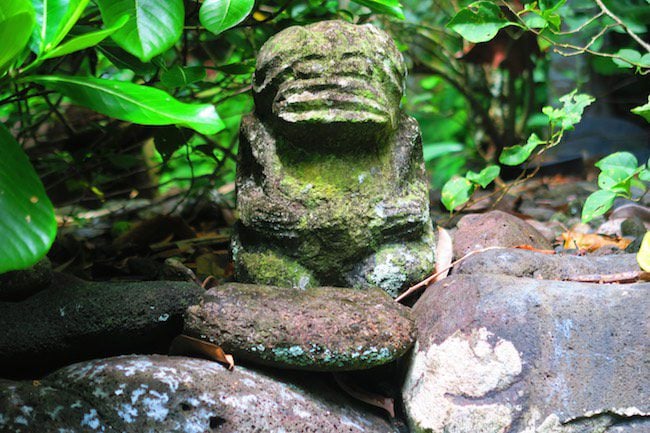
Today, islanders still live a peaceful life in the extra slow lane, making a living off copra production, farming, fishing and small-scale tourism. The islands still experience a population decline, but not because of diseases – rather because of a lack of employment opportunities, especially for youngsters. This led the government to practically lease farmland for free, in the hopes of stimulating local farming and income generation.
Welcome to Jurassic Park
Our first stop in this magical island group is Nuku Hiva, the largest of the Marquesas Islands and the second biggest in French Polynesia. Only the most curious travelers venture all the way out here… Are you sure you’re ready?
It takes over three hours of flying to get from Tahiti to Nuku Hiva. That’s how far the Marquesas are. In fact, there’s even a 30 minute time difference between the islands! On the way, we flew over the atolls of the Tuamotu Archipelago, like rings of gold appearing in the vast blue ocean. So pretty!
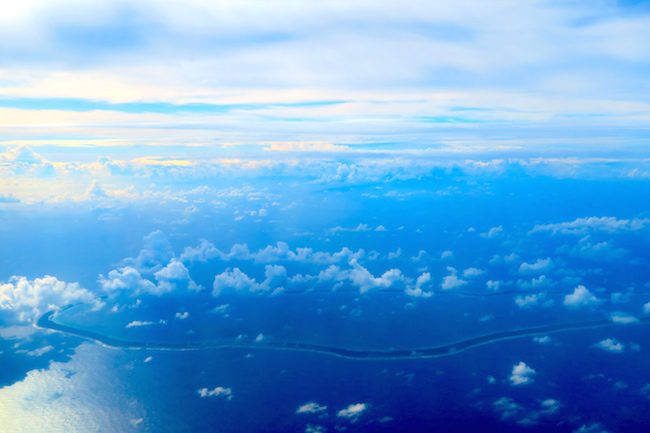
The scene dramatically changed as we approached Nuku Hiva, waking up all the sleepy passengers on board. My good God! Are we seriously landing down there? I think I’ve arrived in the real Jurassic Park… I just hope the dinosaurs are extinct over here too.
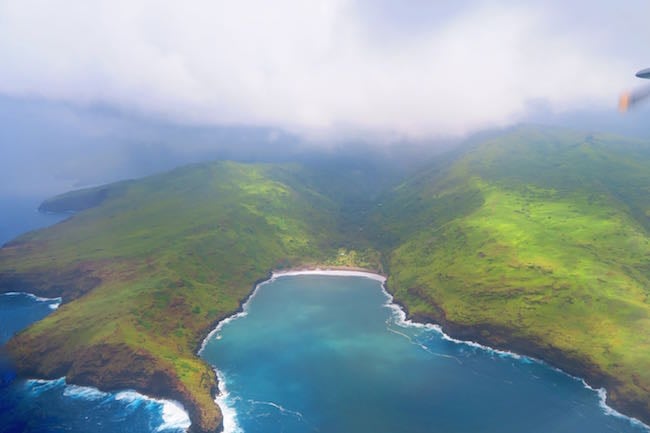
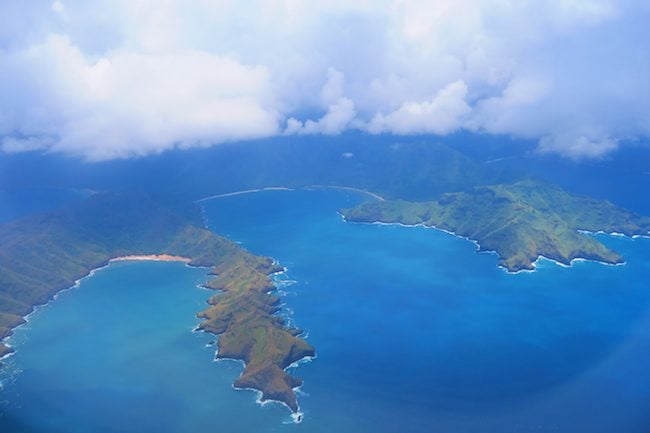
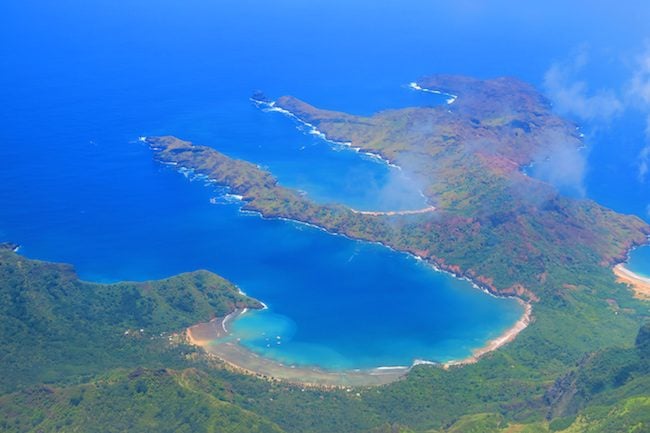
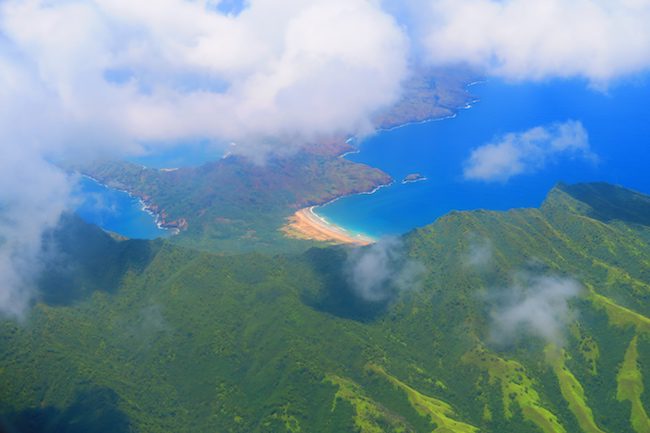
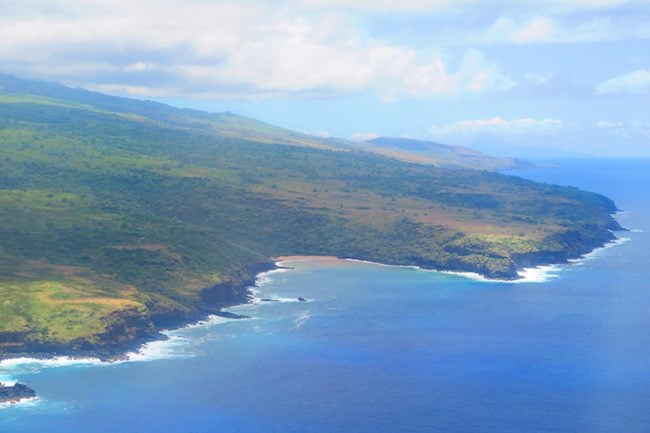
The plane finally touched down in a remote & dry part of the island called ‘desert land’. Though Nuku Hiva is huge, there was nowhere to build a runway other than here – well over an hour outside the main village. You’ll soon see why…
At the tiny airport, I met a lovely family from Tahiti who would be staying at the same pension as me. There was Francoise (Fanfan), Laurent and their son Cyril – who was ending a two month holiday before returning back to France. I didn’t know it at the time, but we would spend the family’s entire three-day visit to the island together (hope they didn’t mind).
A scenic 90-minute taxi ride
The family and I squeezed into a Land Rover driven by our host Alvane, for the most scenic airport-to-town ride I’ve ever been on – over an hour of hair-razing climbs, mind-bending turns and breathtaking views. So Buckle up folks!
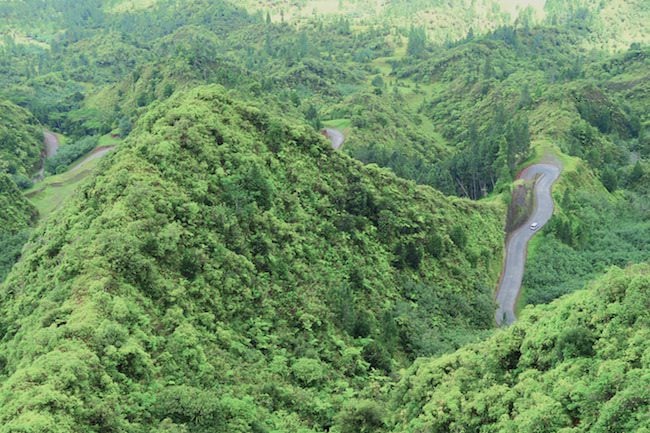
Our first stop was at the local version of the ‘grand canyon’, followed by a bird’s eye view of the Toovii Plateau. Miles and miles of lush and fertile land revealed themselves beneath our feet, resembling scenes from a fairytale. Are you sure we’re on the right island? This doesn’t look like anything I’ve seen so far in French Polynesia!
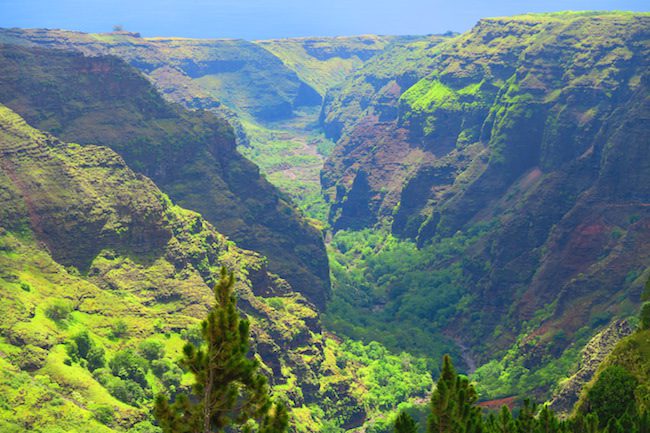
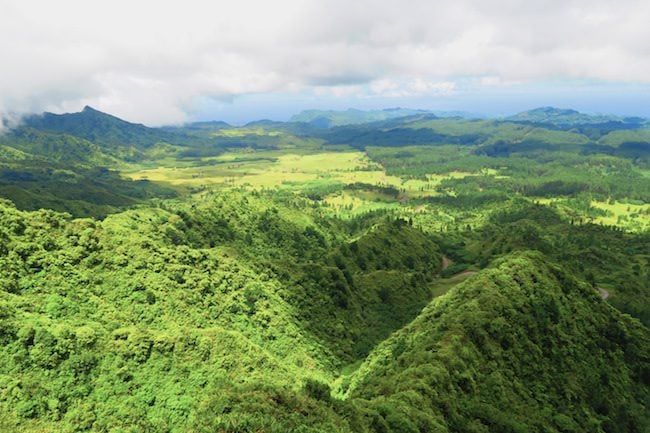
As we descended from the ridges of the former volcano down to the plateau, we passed by endless forests of pine trees as straight as rulers and as high as Manhattan skyscrapers. On the side of the road were fallen rocks, wild horses, lots of cattle and waterfalls from the recent rains. Wow!
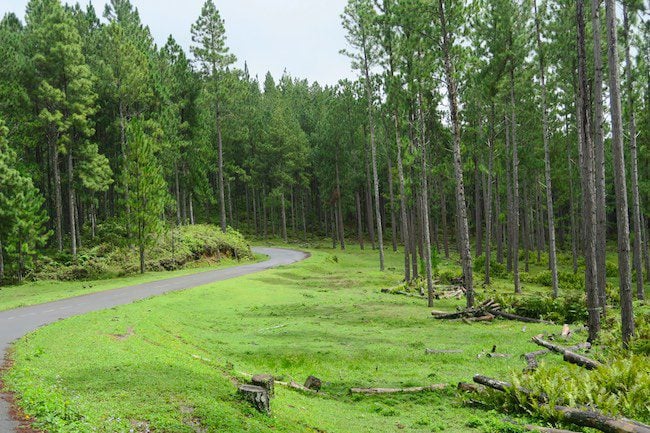
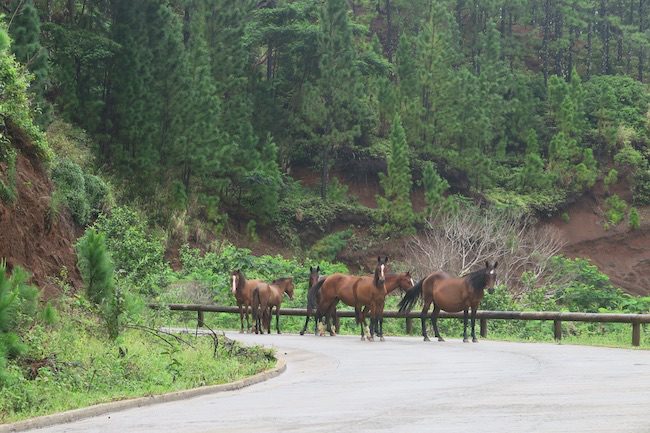
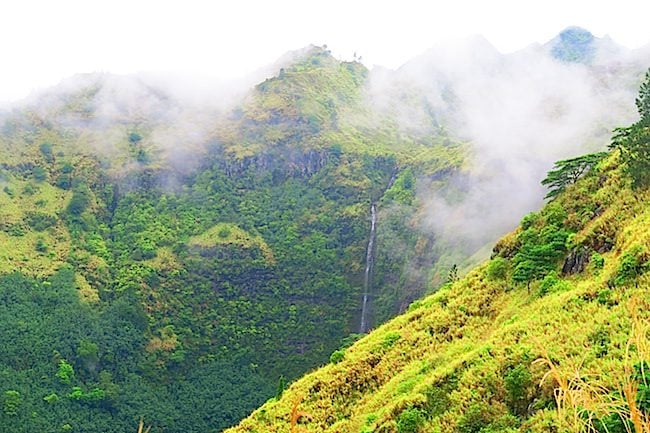
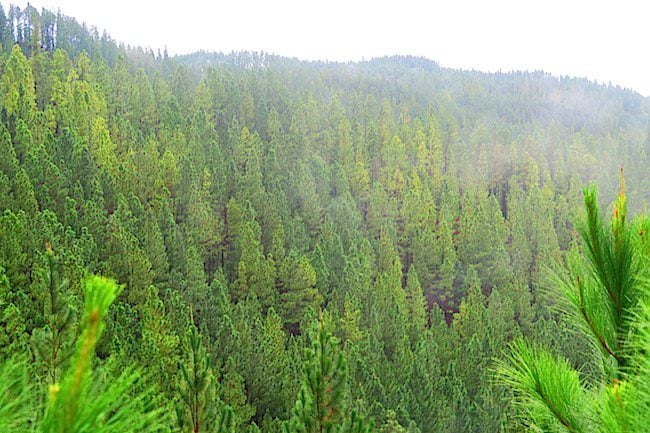
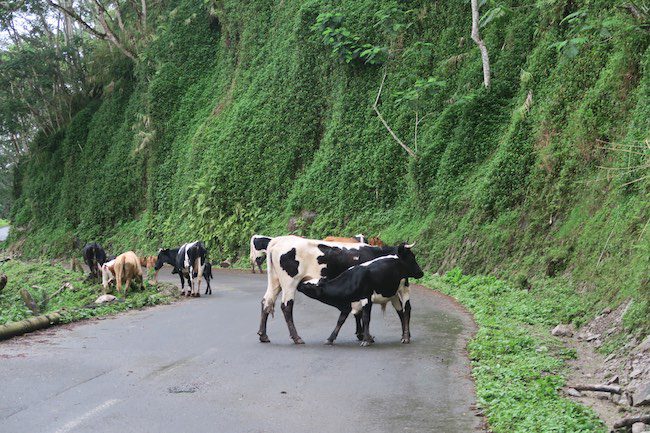
After about 90 minutes, our driver and pension owner Alvane parked the Land Rover at the edge of a cliff. Beneath our feet – the first signs of civilization. This is the village of Taiohae, where I’ll be spending the next 5 nights. I can’t wait to get down there but at the same time just want to stay up here for a little bit longer. This cannot be real! I feel like I’m on the set of some Hollywood movie, Jurassic Park perhaps. But this isn’t a movie, it’s the Marquesas Islands!
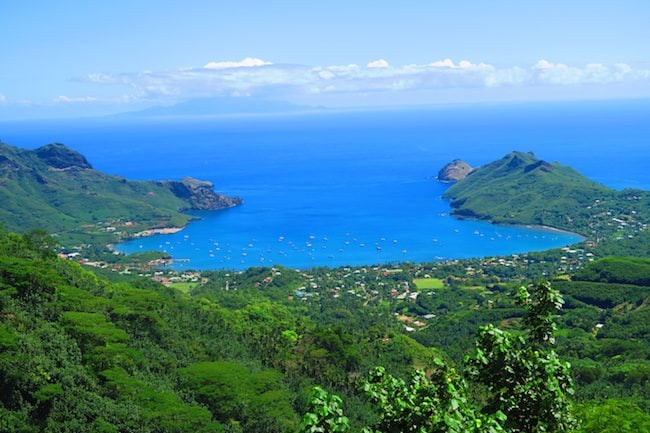
We finally arrived at Pension Koku’u, where we met Alvane’s wife Claudine. Together, they run an amazing little family pension with million-dollar views from the balcony, and roosters that ensure you wake up bright and early to make the most of your day in ‘Jurassic Park’.
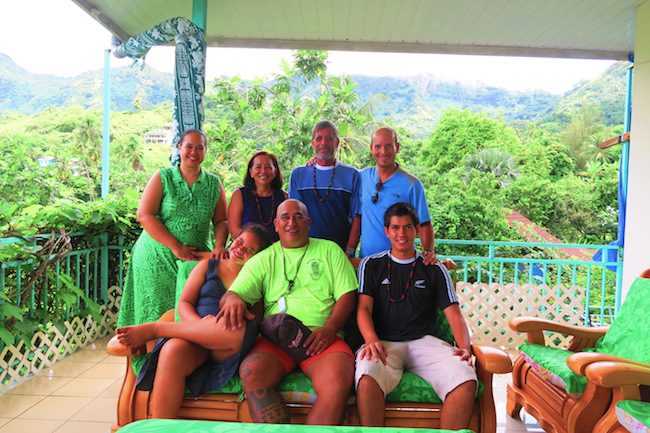
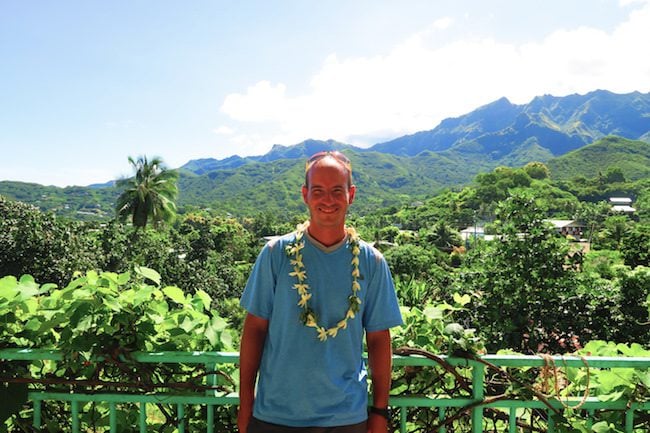
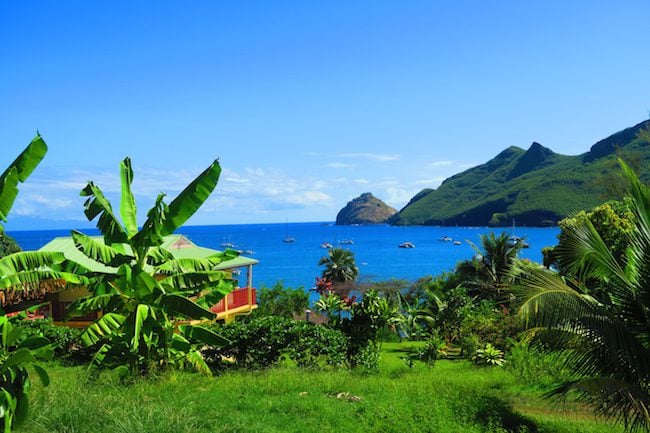
Alvane’s family has a very interesting background. We’ll come back to this later so hold that thought.
Life in the extra slow lane
With Fanfan and Cyril off to do some horseback riding, Laurent and I headed down the hill to check out the village of Taiohae – one of the most picturesque in the entire South Pacific. Less than 3,000 locals live in Nuku Hiva, most in the village that also doubles as the capital of the Marquesas Islands. It’s the kind of village that’s got everything, yet feels incredibly relaxed. Undoubtedly, it is its natural harbor that leaves a lasting impression, filling up the former crater of an extinct volcano. The harbor is a favorite spot for yachts, who park it here during the cyclone season as the Marquesas experience relatively calm & dry weather.
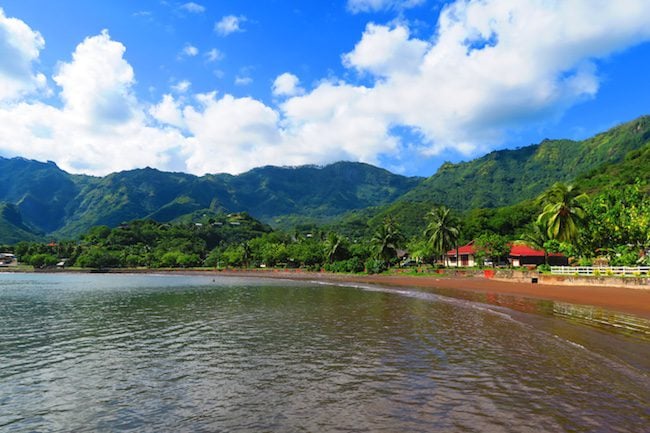
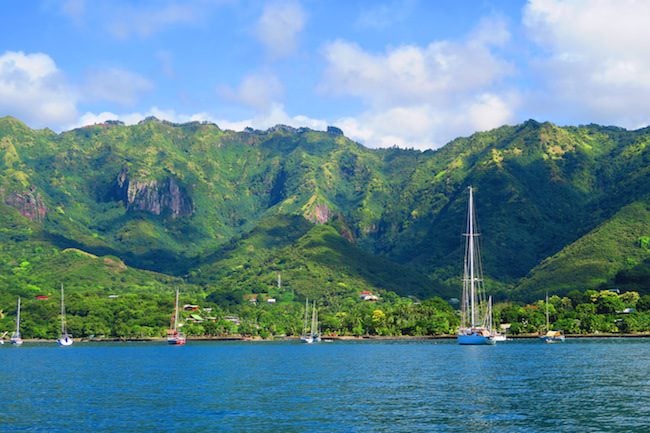
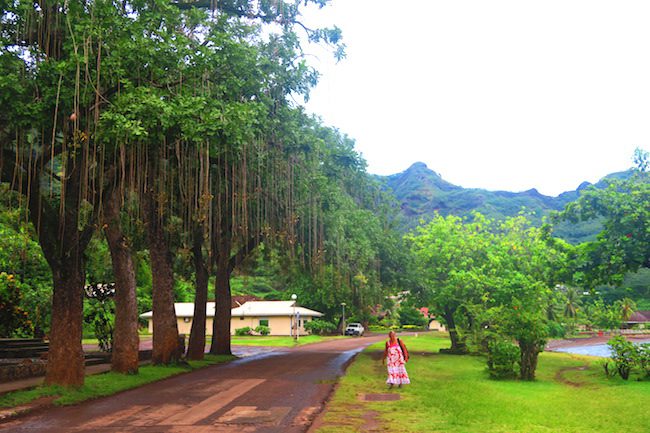
Village life is best described as ‘chill’. Locals fish off the docks for dinner every day, as children play round after round of volleyball by the seaside and fit men race across the harbor in their outrigger canoes. Along the streets are flowers in all colors of the rainbow, smelling and looking so damn good – which is a good thing with all the poop from the horses running around town.
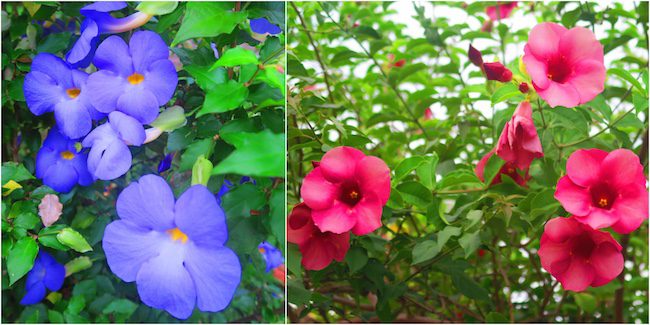
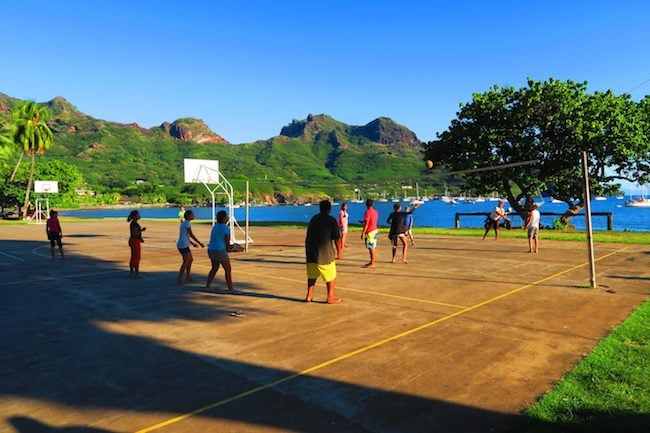
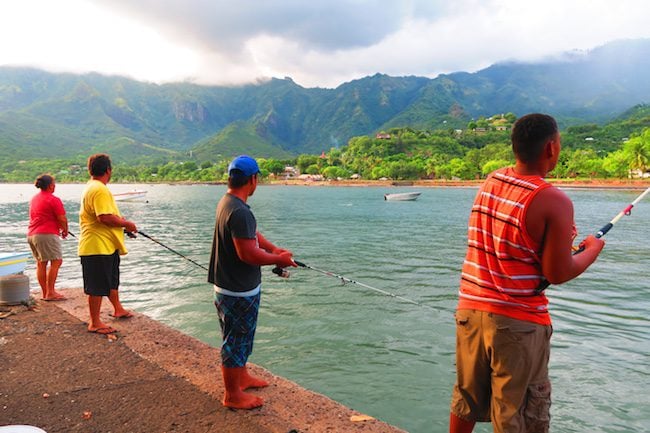
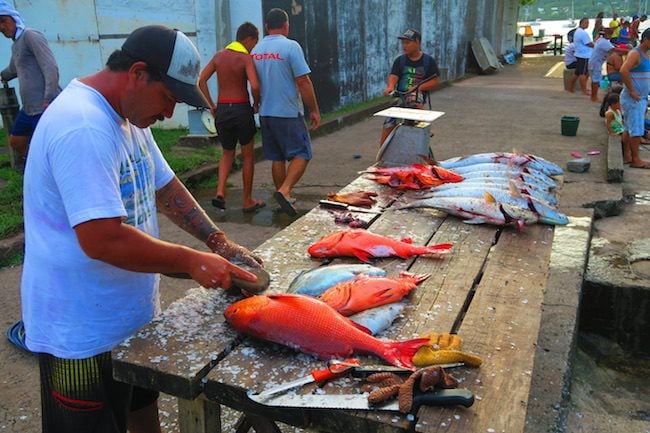
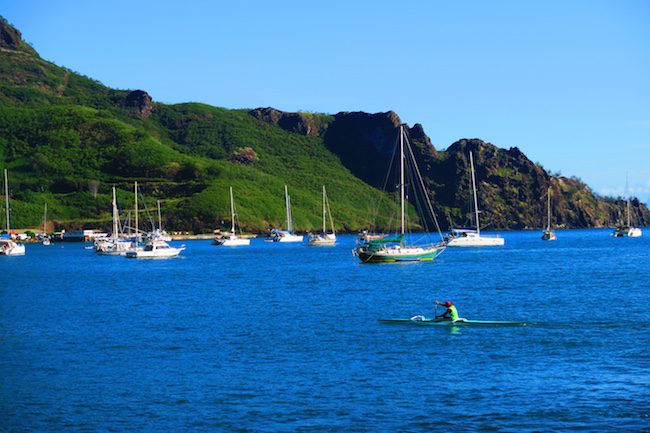
Some houses keep it safe with the usual pack of dogs that you find in South Pacific islands, but others choose the traditional way, with a big Tiki statue ensuring bad spirits are kept out.
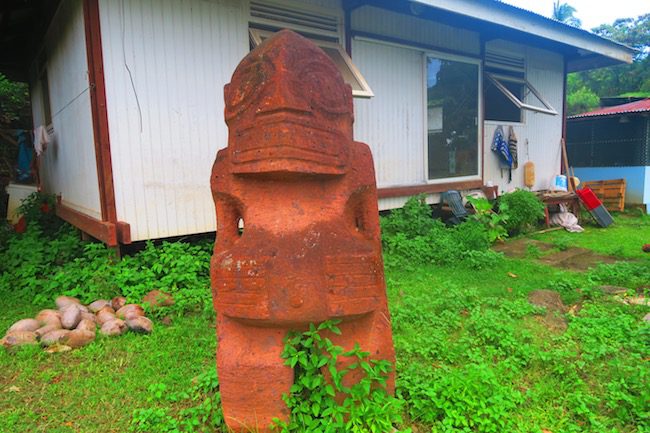
Tiki or not, Christianity rules this slice of land. In Taiohae, the Notre Dame Cathedral looks like it came straight out of King’s Landing. I think I just saw Tyrion Lannister drinking some Hinano beer!
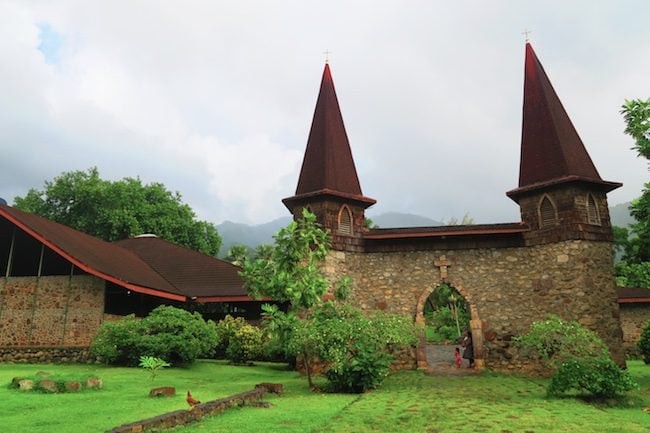
Before grabbing a few of our own Hinano beers, Laurent and I paid a visit to the local artisan center. The Marquesas Islands are the best place in the country to see and buy wood and stonework. Local artists are among the best carvers, using anything from rosewood, the rare sandalwood, basaltic rock and even bones (relax… we’re talking about cow bones here).
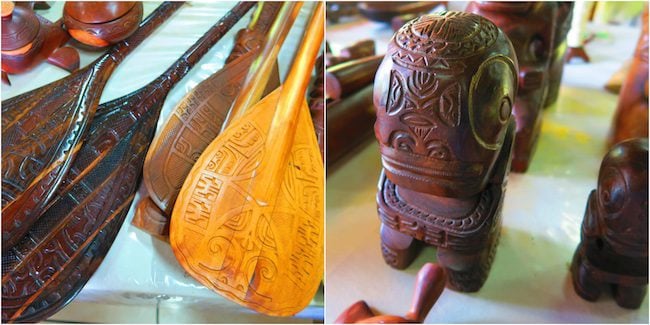
Back at the pension, Claudine and Alvane treated us to a fantastic dinner together with their family. On the menu? Red tuna tartare, raw tuna salad and breadfruit french fries. Yummy! For dessert? How about millions of stars. There’s plenty for everyone in Nuku Hiva!
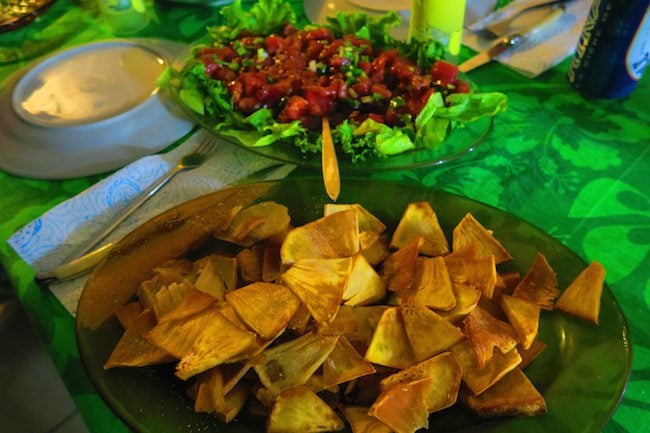
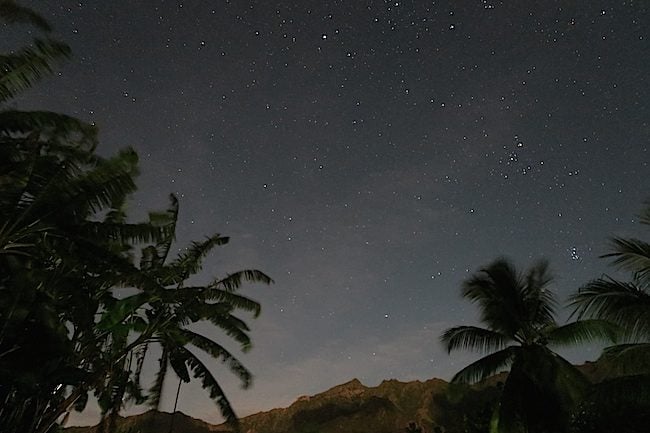
The hunt for the hidden waterfall
The next morning Alvane dropped us off at the pier, where Thierry greeted us on his small boat. Our mission? To visit one of the prettiest spots in the South Pacific – the Hakaui Valley, home to Vaipo Waterfall.
The trip started off with a ‘nice and easy’ 40-minute boat ride. Without a protective reef around you, even a calm day at sea requires you to hang on to the side of the boat. The boat ride gave us the chance to admire the village and the southern coastline while seeing from up close the scars left by centuries of ancient volcanic activity.
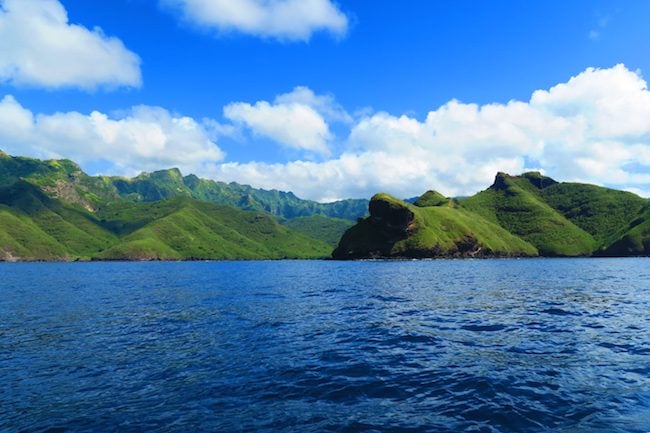
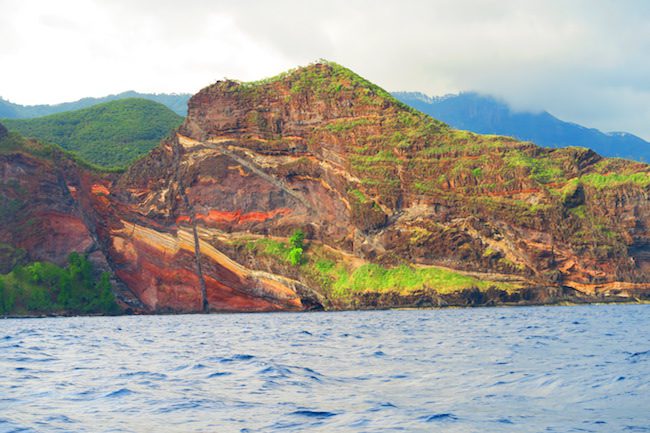
As scenic as the boat ride was, it couldn’t prepare us for what came into view as we entered Hakatea Bay. Immense basaltic cliffs surround the bay, with a valley extending deep into the lush mountains. Somewhere in there, lies a gorgeous waterfall – and that’s where we’re headed!
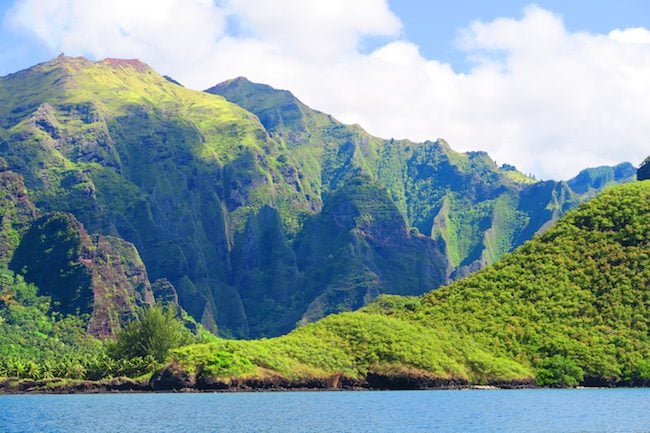
We made landfall on the beach for a brief stop, as fishermen were just coming back with the catch of the day. This is the beach where one of the tribes from Survivor Marquesas spent 40 days on. Lucky, or unlucky them. It’s gorgeous and all, but there are nasty sandflies lurking everywhere…
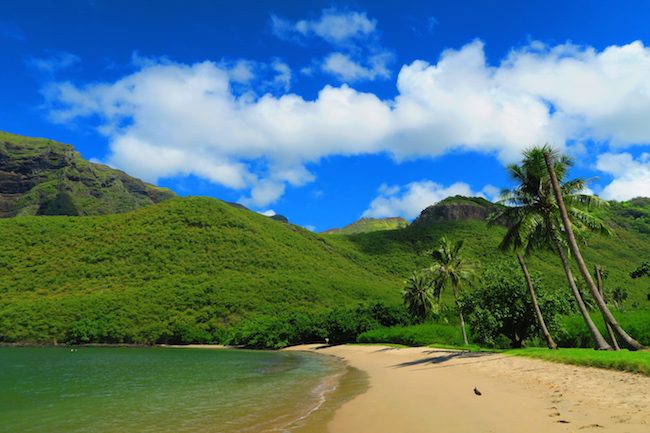
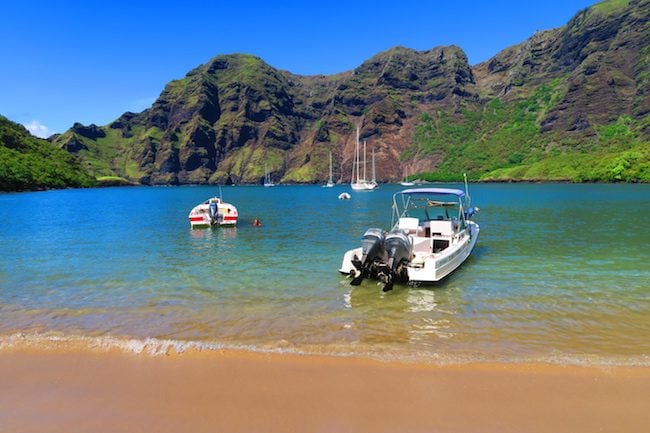
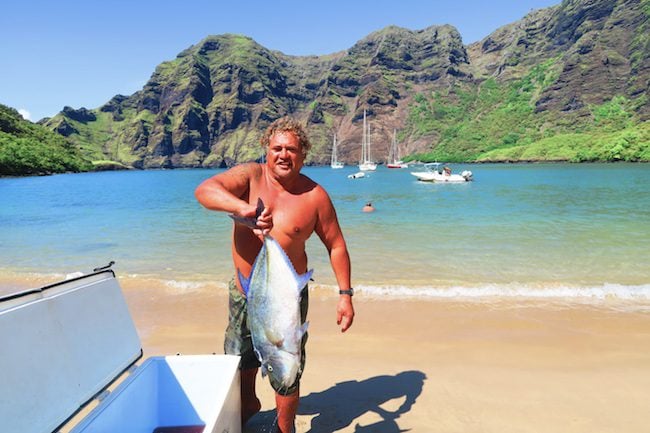
Surprisingly enough, there’s a small village just behind the beach. It’s home to just a few families, a lot of Tiki statues and even a payphone that looks like it hasn’t been used since the late 90s. Everything seems to gown here, and I mean EVERYTHING. That’s a good thing, because the nearest shop is a boat ride away.
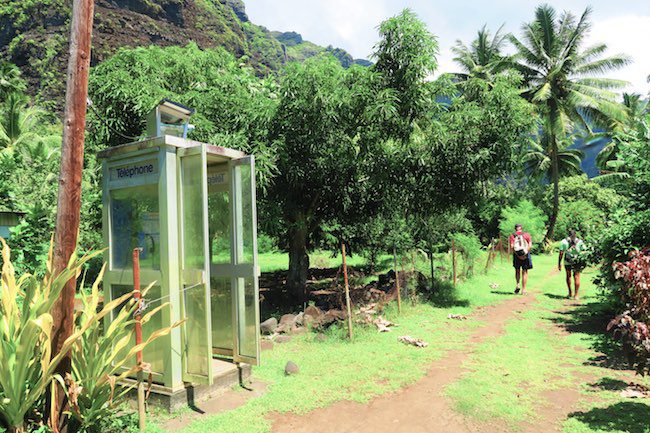
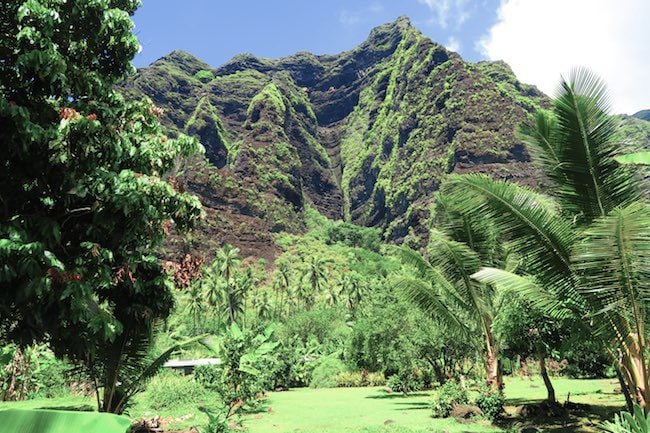
Who needs a Kwik-E-Mart?
In addition to the usual fruits and beautiful flowers, there’s even more exotic things growing on the trees out here, like noni fruit and tamanu nuts with their medicinal uses, jambolana beans that are the South Pacific’s equivalent of pistachio and even kapok nuts which house cotton-like fibers. Heck, there’s even chili peppers! So who needs a Kwik-E-Mart?
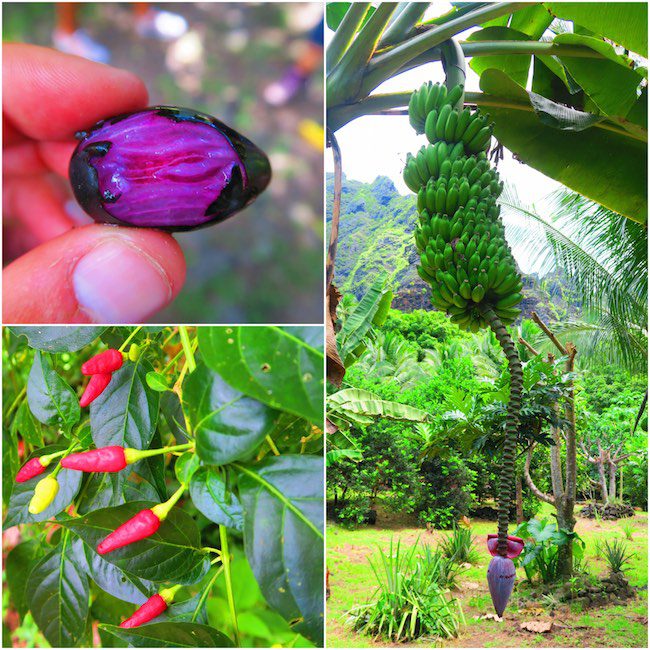
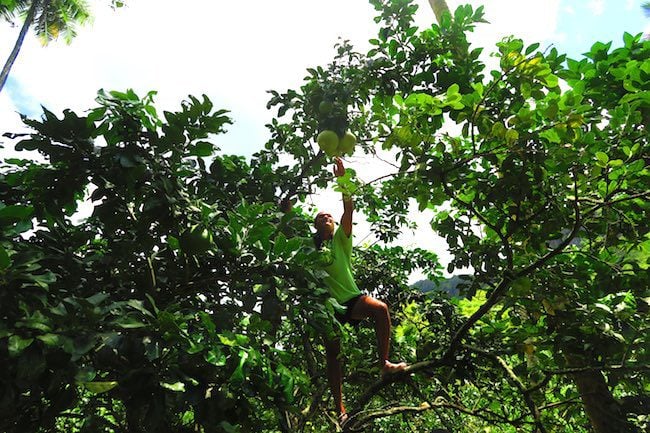
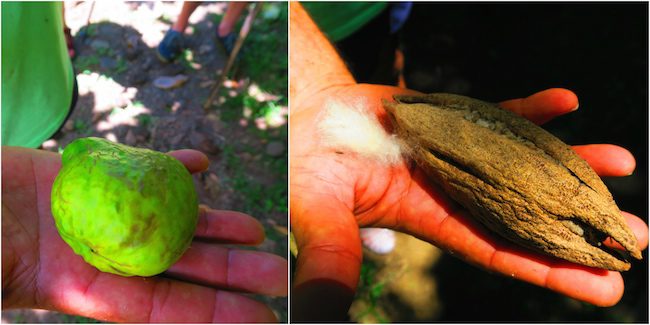
To get to the waterfall, we would have to cross four rivers and walk along the ancient ‘royal road’ – constructed over 1,000 years ago by the locals. The road is so well built, that engineers even accounted for elevation, dumping huge boulders into low-lying spots to keep things as leveled as possible.
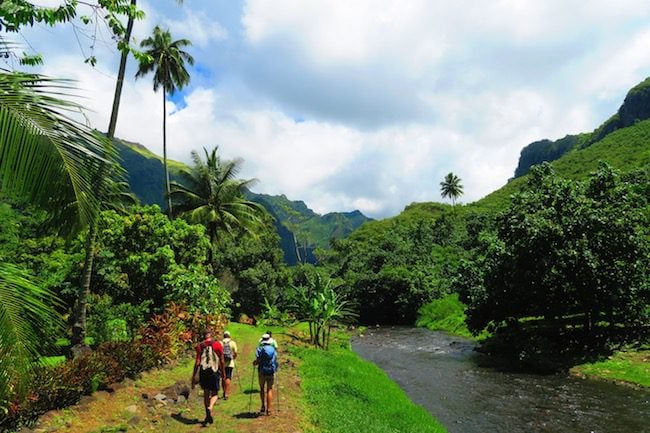
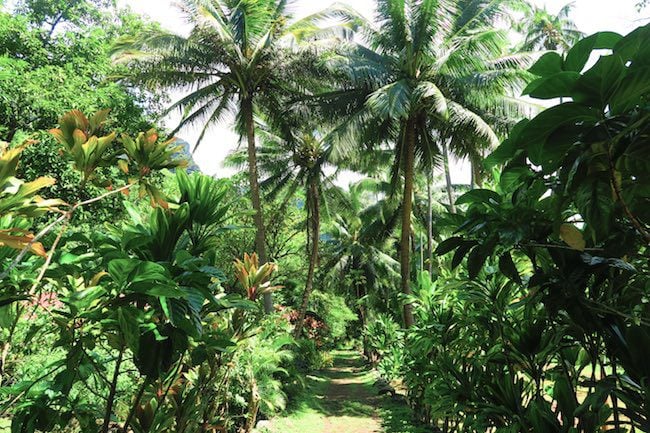
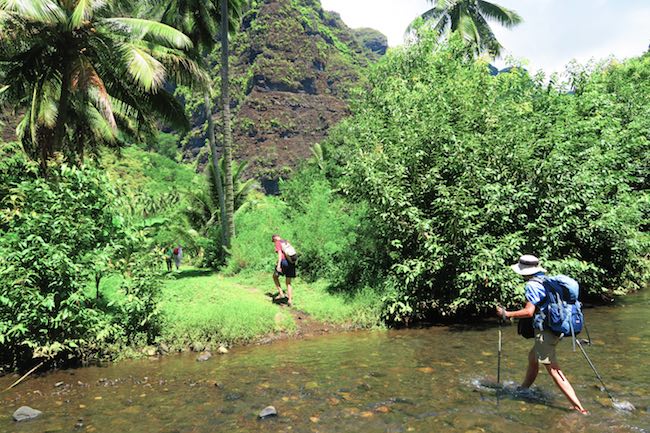
Deep inside the valley lie millions of nasty mosquitos, but also signs of an ancient civilization that somehow managed to tolerate the bites and call this forest home. Thierry showed us the various structures. Some were for sacrifices, some were for ceremonies and some for homes. There were even small pits in the ground that ironically enough were not used for sacrifice – but rather for storing fermented breadfruit that could be used in years of drought. These days, the ancient villages are long gone, and it’s the giant mape trees that have taken over with their powerful roots.
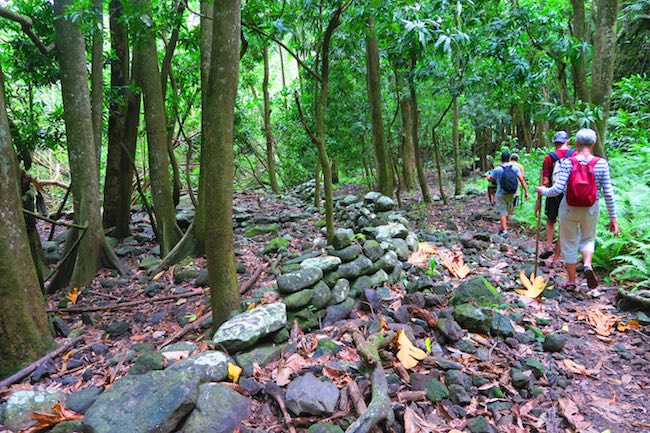
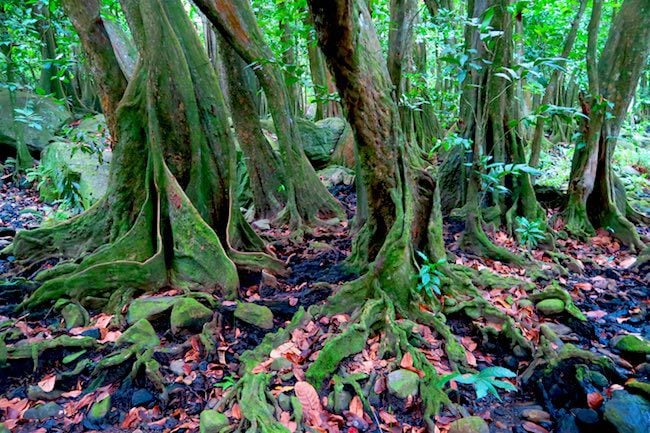
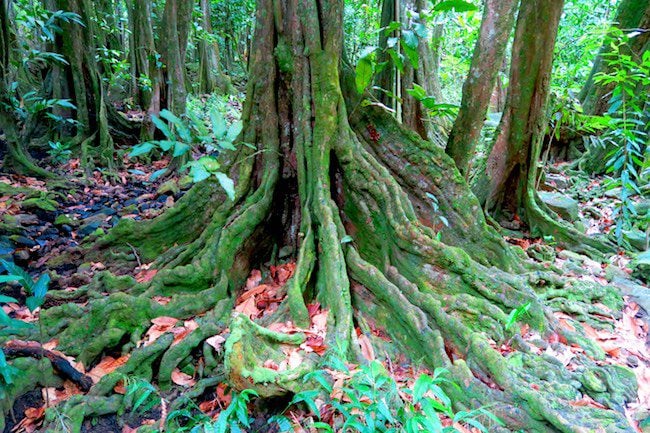
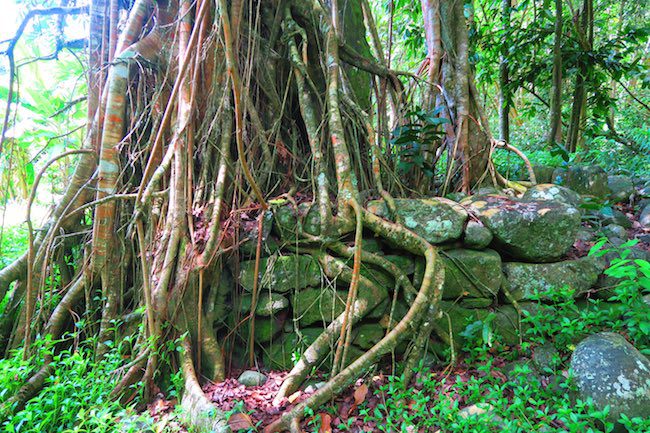
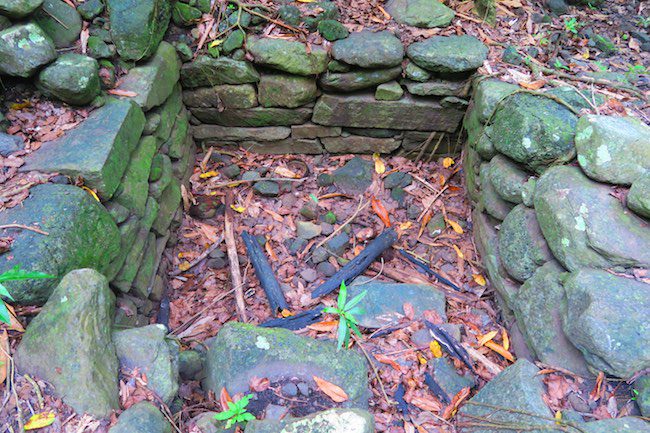
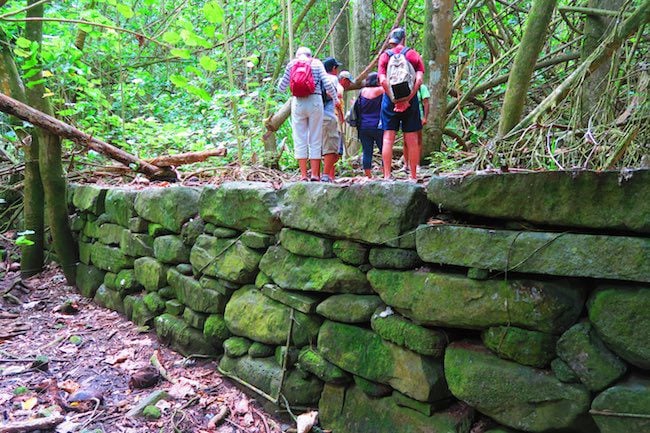
As we made it into a clearing in the dense rainforest, the jagged cliffs that amazed us from the boat were finally within reach. I’ve never seen anything like this before.
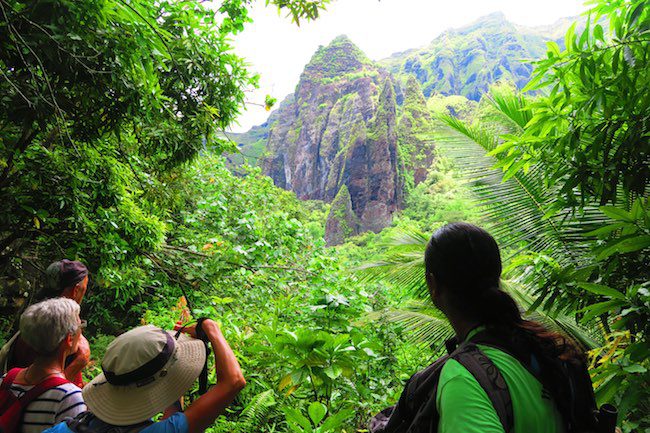
A few more steps and out of those cliffs, the reason why we suffered all those mosquito bites – the 350-meter tall Vaipo Waterfall, the highest in French Polynesia!
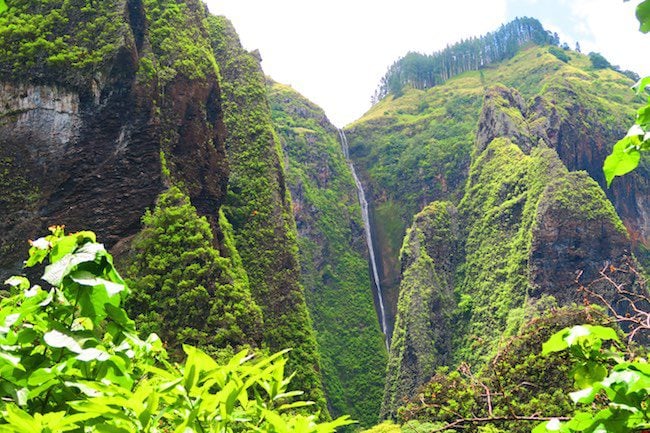
As we crossed the fourth river, the cliffs started to close in on us. We must be close. This is the end of the valley, the end of the line. You can clearly hear the waterfall. A few more meters and we finally made it to a natural pool that’s fed by the waterfall. The fall itself is hidden behind the curving cliffs. You can only catch a glimpse of it unless you really don’t value your life. I guess it’s nature’s way of teasing you. You can come close… but not too close. Now it’s time to head back! Nasty mosquitos, here we come.
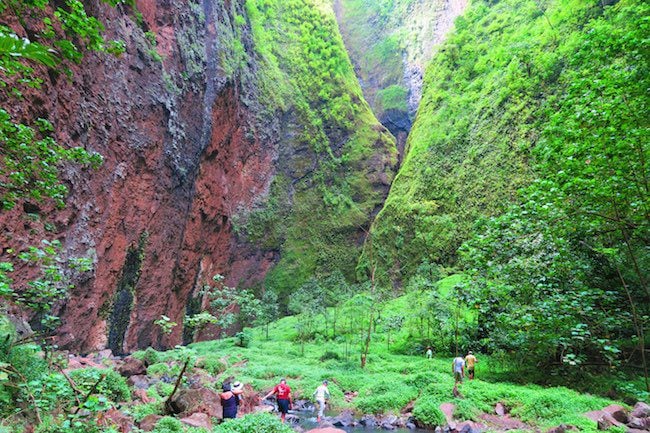
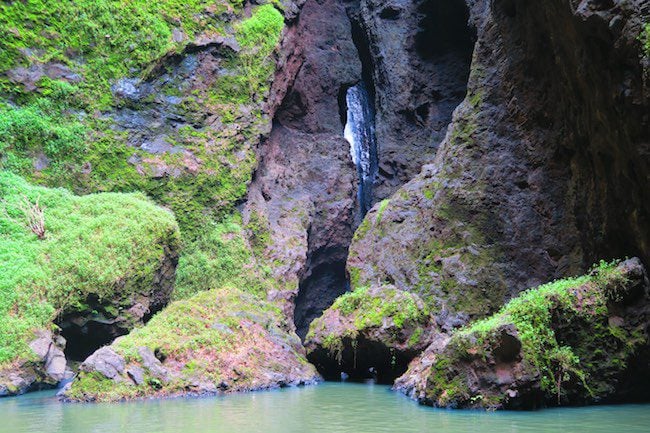
South Pacific nightlife
Such a memorable day must be celebrated with an ice-cold pint of Hinano beer, so our entire group headed to the only place open in Taiohae after 5 pm. Soon after, Claudine & Alvane joined and invited us for dinner instead of cooking back at the pension. An hour turned into two, two to three and bottles of wine quickly followed the pints of beer. There was lots of music, lots of dancing and a lot of talk about life. The band even played my all-time favorite Tahitian song! It was one of those nights you just didn’t want to end, and it ended quite late by local standards at 11 pm!
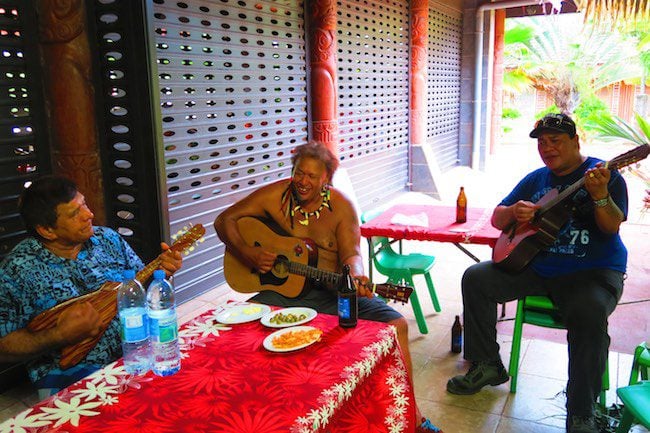
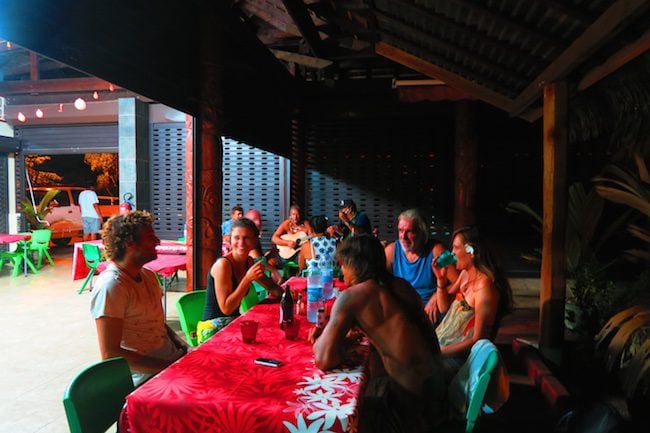
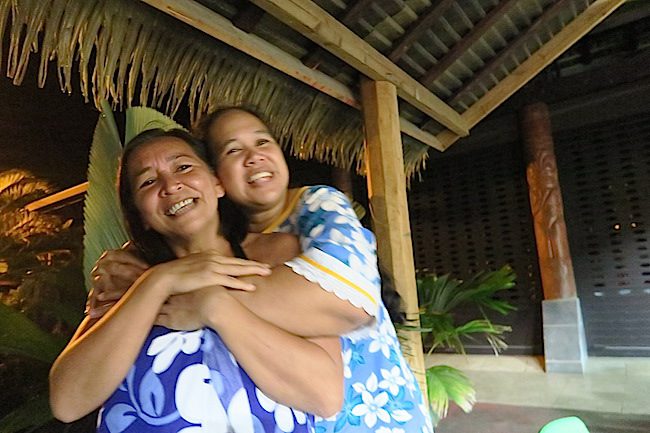
We’ve barely scratched the surface. Head over to the next page for more wonders from Nuku Hiva!
